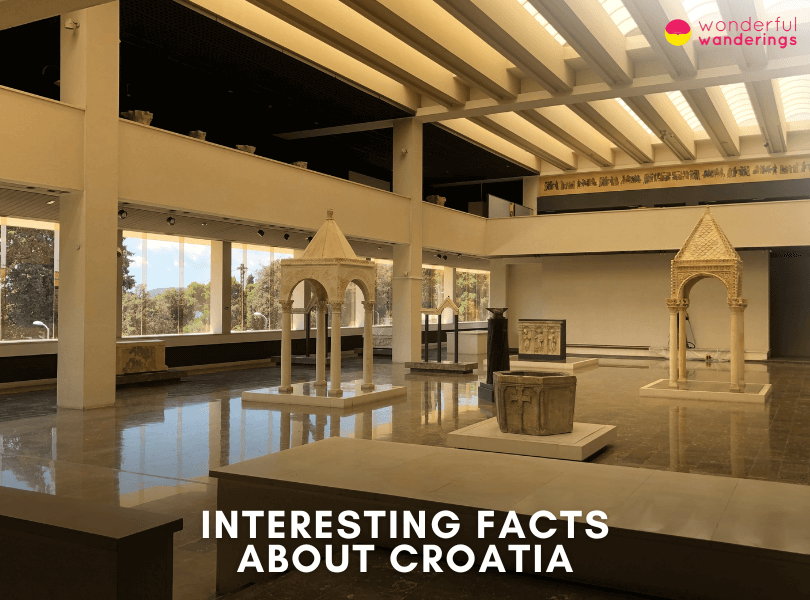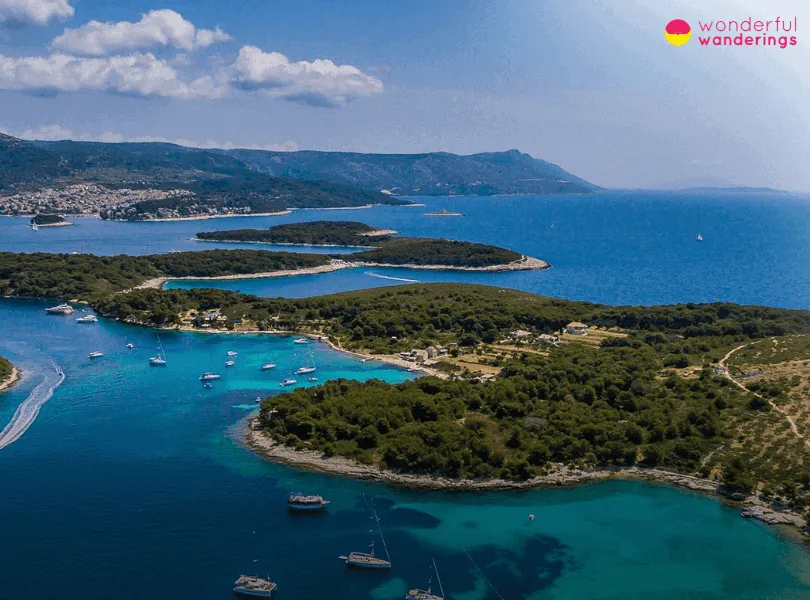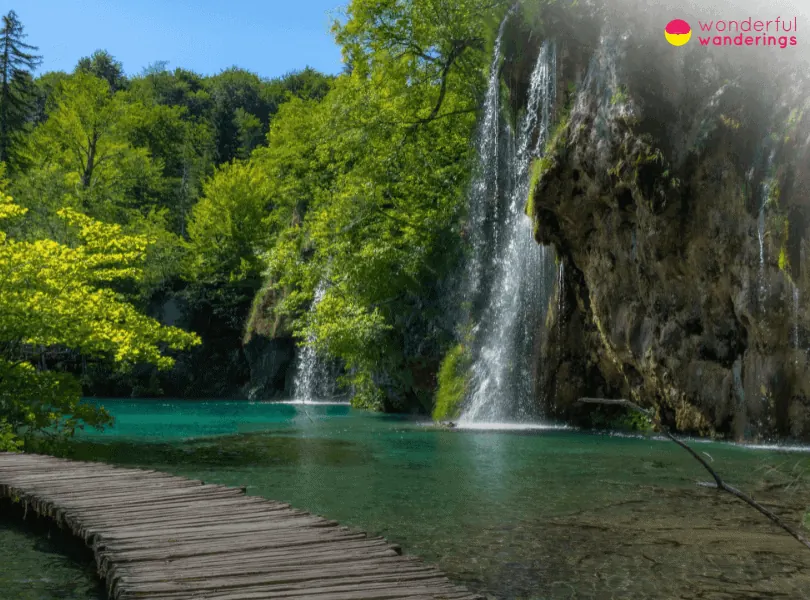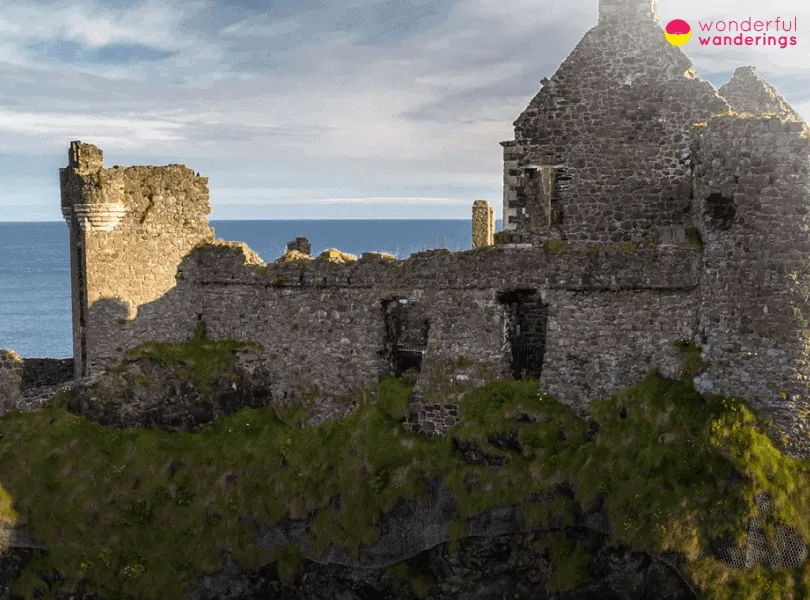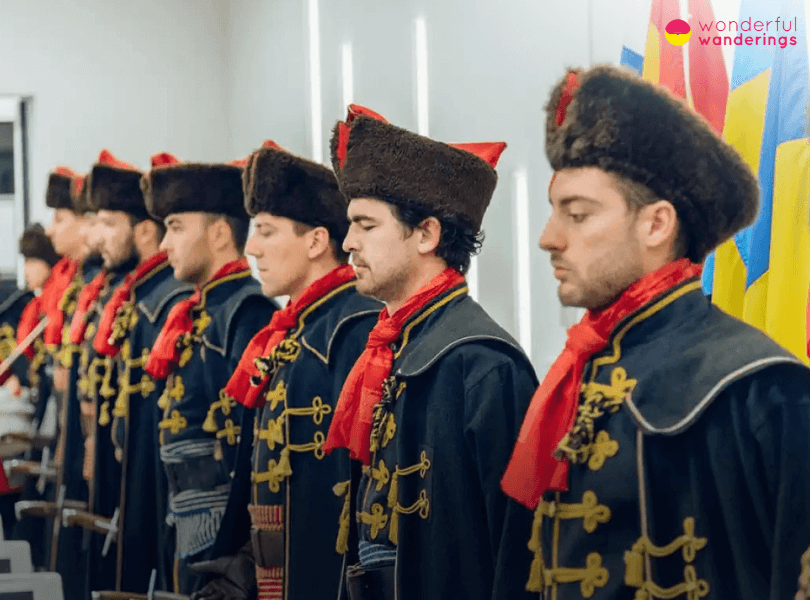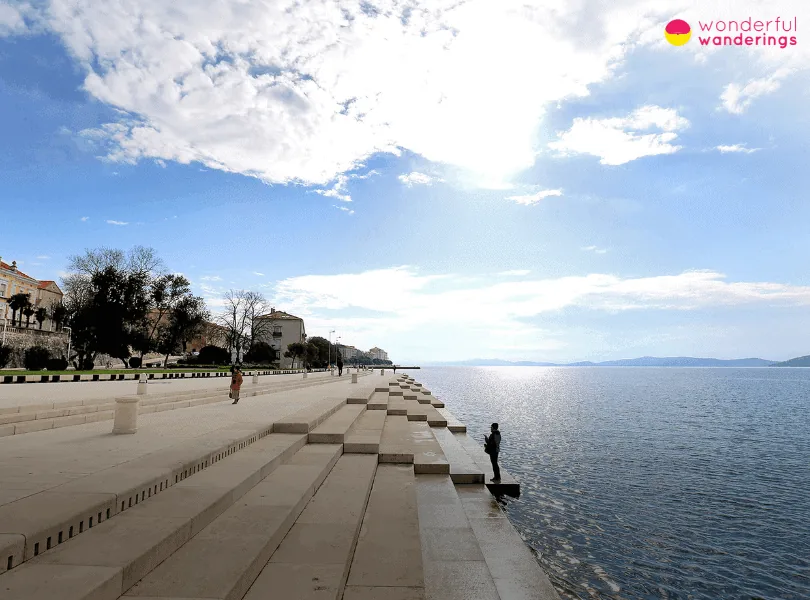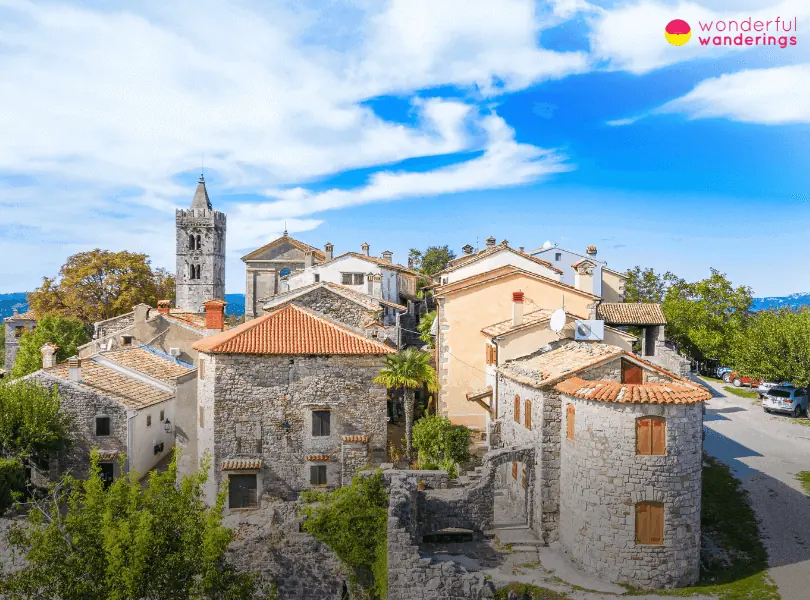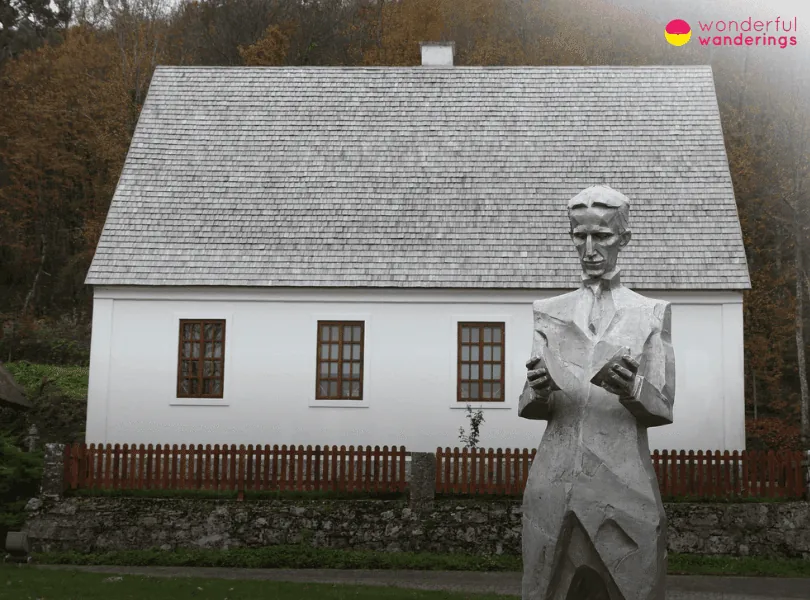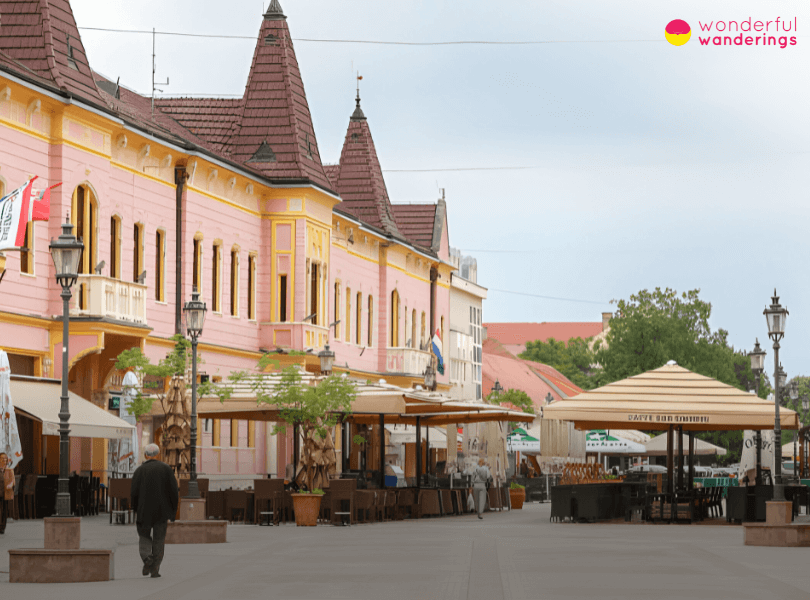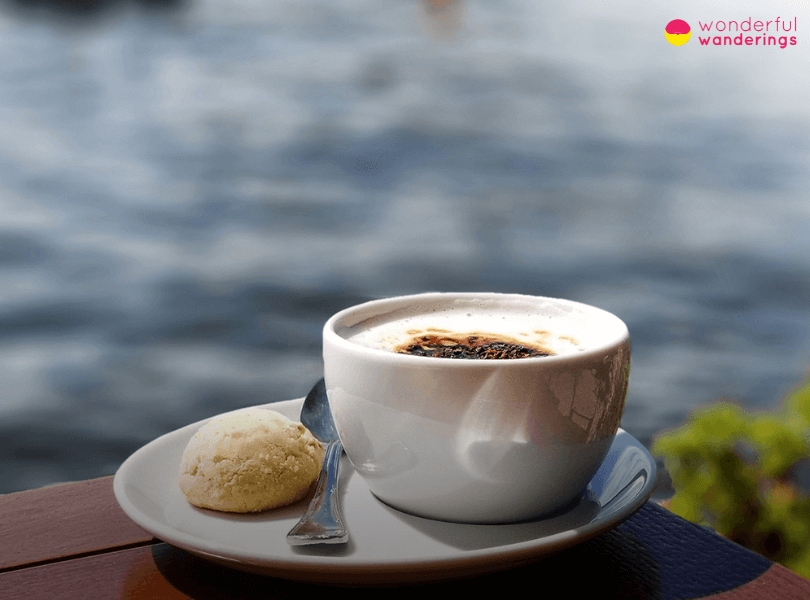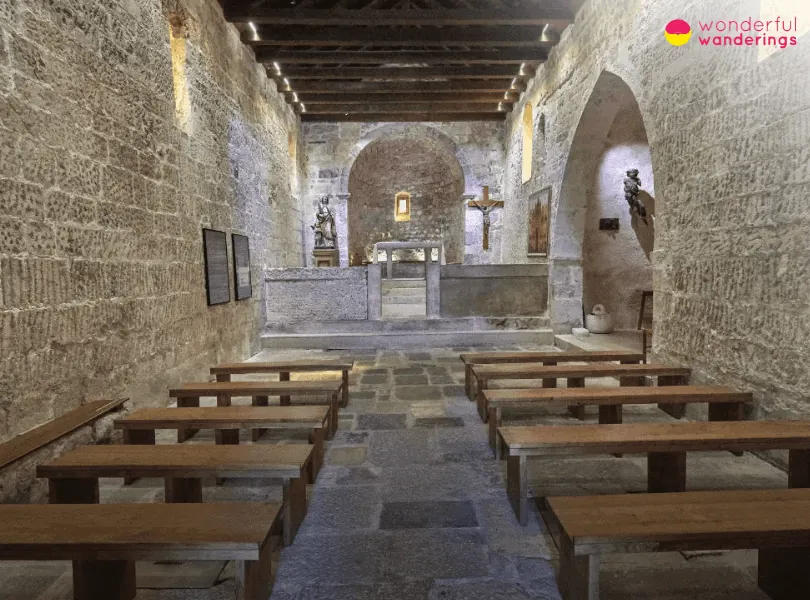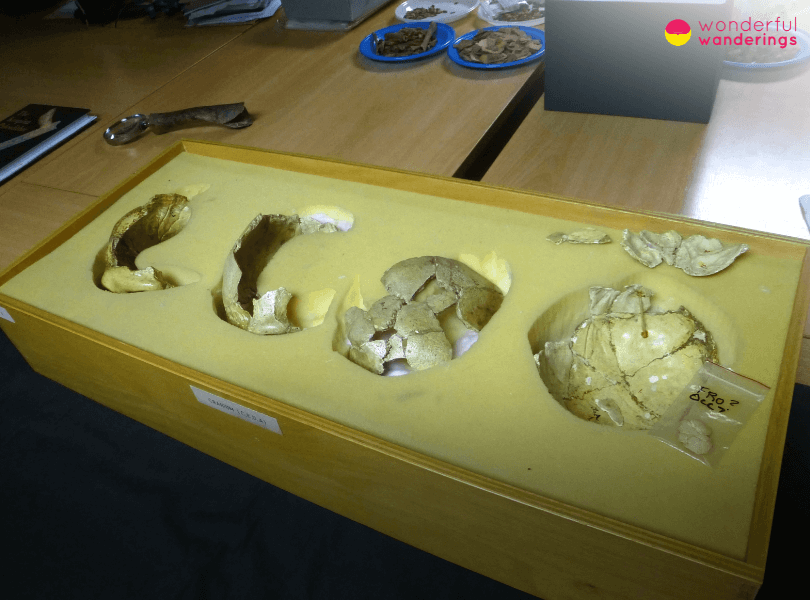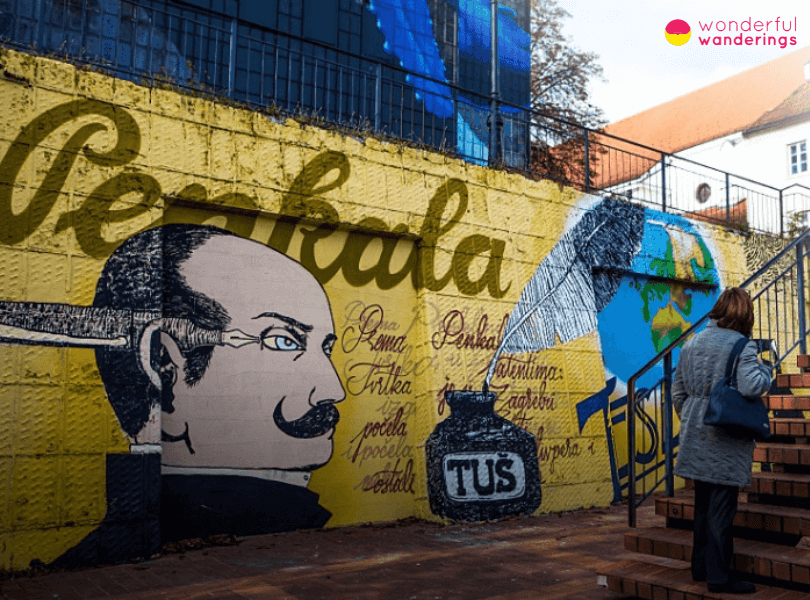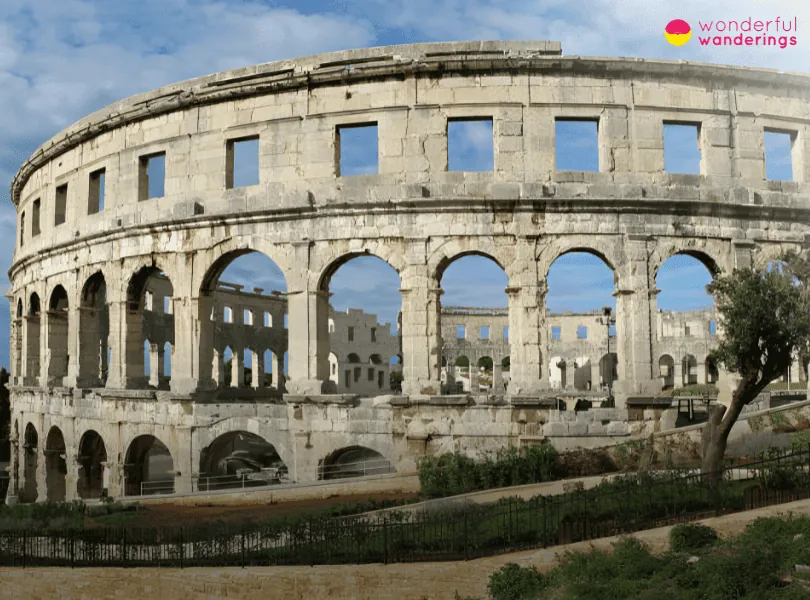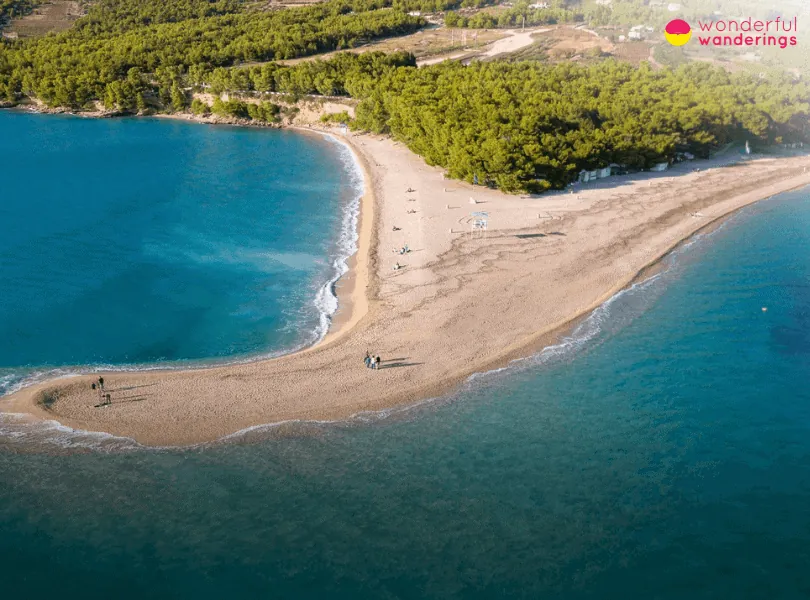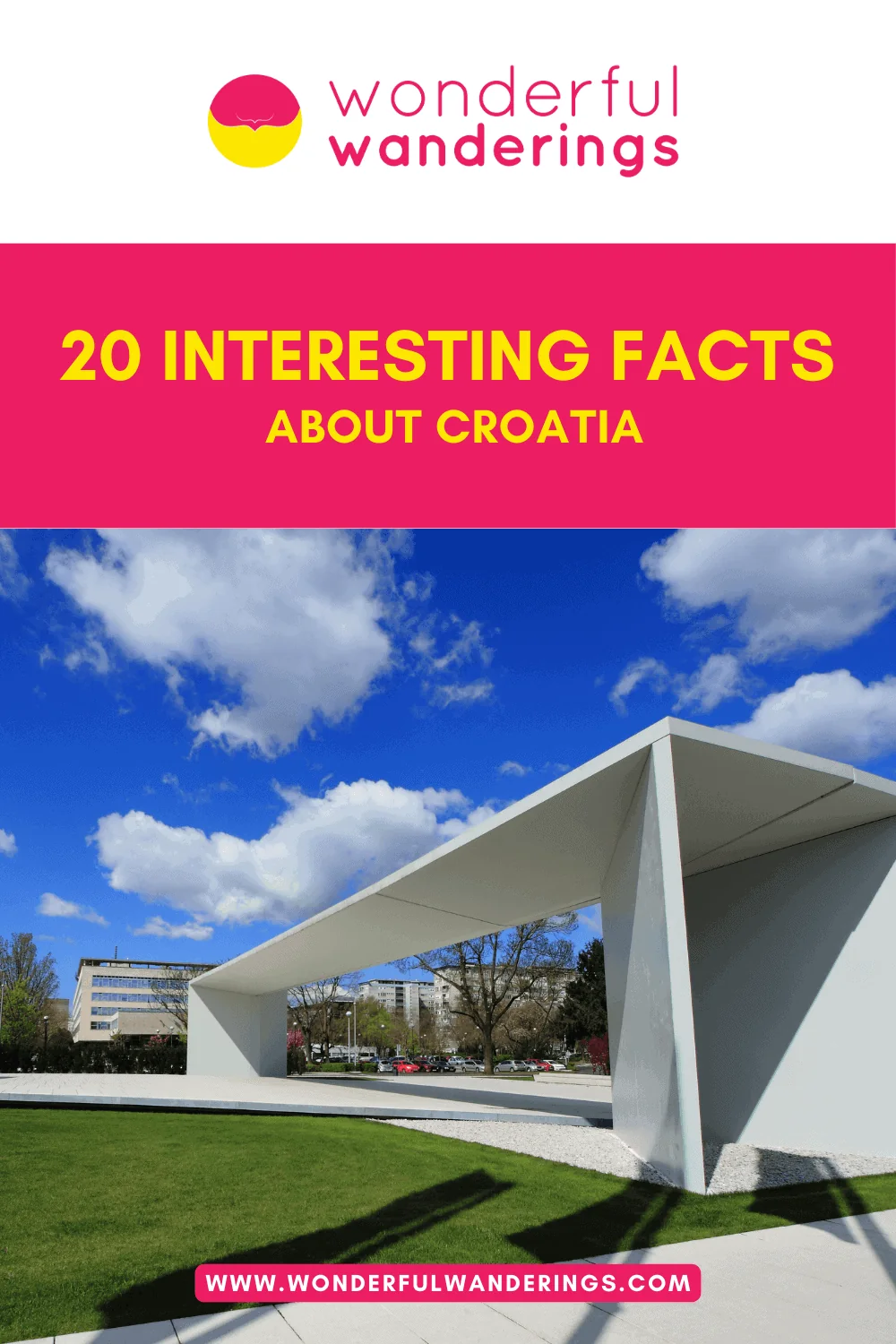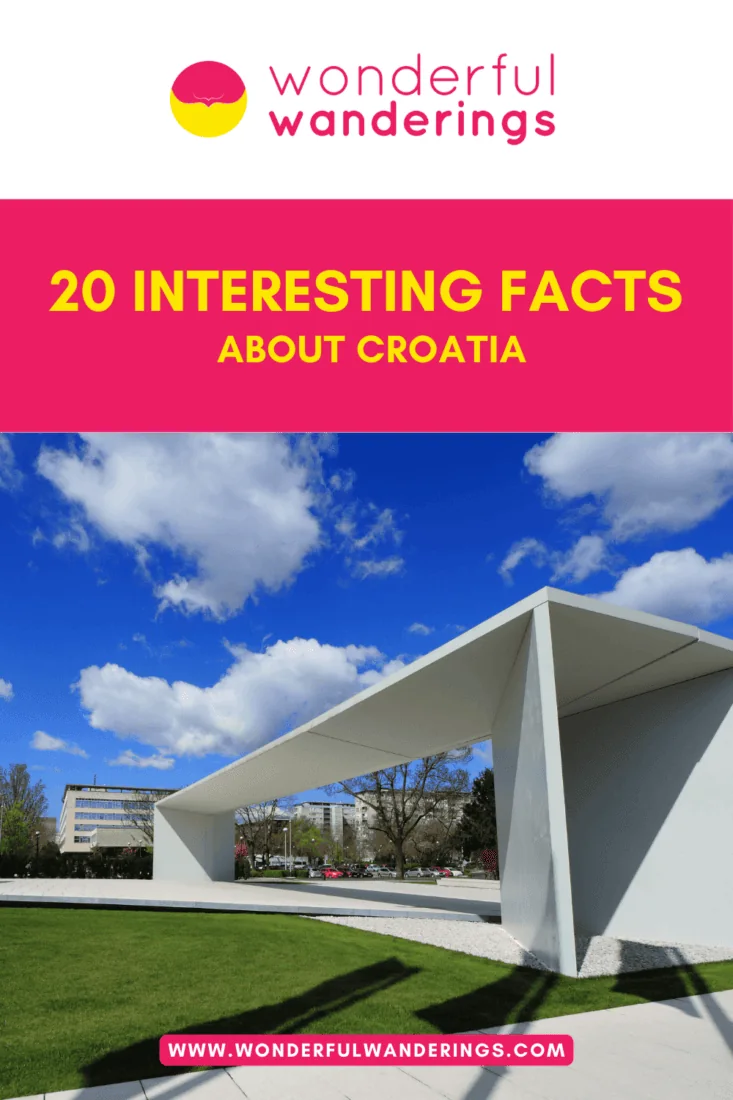Croatia is in Southeastern Europe, with over 1,300 islands along its coastline, high biodiversity and popular tourist destinations. Croatia has extensive protected natural areas, including eight national parks, which harbor rare plants and animals. Croatia has a long history and culture, evidenced by Vinkovci being the oldest continuously inhabited European town, dating back over 8,000 years. The Croats developed distinct cultural traditions that have influenced broader culture, like the origin of neckties from Croatian mercenary uniforms. Croatia is also known for innovations, like the mechanical pencil invention by Slavoljub Penkala. It highlights the natural and cultural diversity of Croatia, including ancient historic architecture, medieval walled towns, protected parks harboring rare wildlife, local traditions and long coastlines dotted with invention and record-breaking sites, attracting tourists.
Listed below are interesting facts about Croatia.
- Croatia Has 1,300 Islands Along Its Adriatic Coast. Croatia has 1,300 islands and islets along its Adriatic Coast, stretching from the Istrian peninsula to Montenegro. The islands have high biodiversity, with 7,000 identified plant and animal species, including endangered loggerhead sea turtles and monk seals. Most of the islands are located along Croatia’s portion of the coast with cliffs, caves and karst topography. Tourism focused on the islands’ natural beauty and historic towns is important to the regional economy.
- World’s Largest Truffle Was Once in Istria, Croatia. The world’s largest truffle, weighing 1.31 kilograms (2.8 pounds), was found in Istria, Croatia, in 1999 by renowned truffle hunter Giancarlo Zigante. White truffles are rare and expensive, valued for their intense flavor and aroma. The previous record truffle found by Zigante sold for €4,594 ($5,000, £3,938), but the 2014 Italian record-breaker was sold at €56,290 ($61,250, £48,254), at auction, showing giant truffles’ culinary status. Truffles grow underground in symbiosis with certain trees and must be unearthed by experts and truffle-hunting dogs. This giant fungus crowned Italy as the truffle-hunting destination.
- 10% of Croatia’s Land Area Is Protected Parks/Reserves. 10% of Croatia’s land area consists of protected natural areas, including eight national parks that showcase mountains, lakes and forests. These conservation areas harbor many rare and endangered Croatian species, from lynx to sea turtles. Sustainable tourism centered on Croatia’s hiking brings economic benefits to rural areas and incentives to continue conservation. Croatia’s ecological network is the core of regional biodiversity protection.
- Filming Location for Game of Thrones’ King’s Landing. Dubrovnik, Croatia, was the main filming location used to represent King’s Landing in Game of Thrones. Dubrovnik’s medieval walled Old Town, Gothic architecture, cobblestone streets and proximity to the sea were ideal stand-ins. Many iconic scenes were filmed along the city walls, inside landmarks like churches and palaces and in the harbor, which was converted into the Blackwater Bay battle set.
- Necktie Originated from Croatian Mercenaries. The modern necktie originated from the 17th-century Croatian mercenary soldiers known as Cravats or Croats. This distinctive knotted neckwear was termed a “cravat” in France, leading to the emergence of the modern necktie that remains a staple of formal menswear. Its roots are to the battlefields of 17th-century Europe and the uniforms of Croatian mercenaries.
1. Croatia Has 1,300 Islands Along Its Adriatic Coast
The 1,300 Islands are a collection of islands and islets along Croatia’s eastern Adriatic Coast. The islands stretch from the Istrian peninsula in the north to the Bay of Kotor in the south, near the border with Montenegro. The islands vary, with the largest being Cres and Krk, each covering 404 square kilometers (156 square miles). Most of the islands are located along Croatia’s portion of the coast with cliffs, caves and karst topography. The islands and surrounding seas are known for their high biodiversity, with 7,000 plant and animal species have been identified, with 120 considered threatened or endangered. Important species include loggerhead sea turtles, bottlenose dolphins and the critically endangered monk seal. The islands have been inhabited since ancient times. Tourism centered around the islands’ natural beauty and historic towns is a major component of the regional economy.
2. World’s Largest Truffle Was Once in Istria, Croatia
The giant white truffle (Tuber magnatum pico) set a record according to the Guinness Book of World Records. It was 20% larger than the previous record holder, a 1.31 kilograms (2.88 pounds) truffle found in 1999 in Istria, Croatia, by the renowned truffle hunter Giancarlo Zigante. This mammoth fungus was unearthed by a team of expert truffle hunters and their dogs near Pisa. White truffles are rare and expensive, valued for their intense aroma and flavor. They grow underground in a symbiotic relationship with the roots of certain trees like oak and hazelnut. The previous world record truffle found by Zigante was worth an estimated €4,594 ($5,000, £3,938)
at the time of discovery. The 2014 record-breaking Italian truffle was sold at auction in New York to a buyer from Taiwan for €56,290 ($61,250, £48,254), demonstrating that giant truffles can reach higher prices in the gourmet world due to their rarity and culinary status as a delicacy. This truffle crowned Italy as the world’s top truffle-hunting destination.
3. 10% of Croatia’s Land Area Is Protected Parks/Reserves
Croatia has an extensive system of protected natural areas covering over 10% of its land territory. This includes eight national parks, 11 nature parks, two strict nature reserves and over 80 special reserves. Significant landscapes, park forests and other conservation areas bring Croatia’s total protected land to 444 designated sites. The most famous of Croatia’s national parks is Plitvice Lakes National Park, known for its striking karst lakes and waterfalls, which has UNESCO World Heritage status. Croatia’s national parks showcase the country’s mountains, lakes, waterfalls, islands and forests. Nature parks also conserve Croatia’s natural landscapes on a larger scale. This wide array of protected areas conserves Croatia’s biodiversity. Many rare, endemic and endangered species of plants and animals, from lynx to sea turtles, are protected. Sustainable tourism centered around Croatia’s natural beauty and hiking brings economic benefits to rural areas and incentives for continued conservation. Croatia joined the EU Natura 2000 network and its national ecological network and protected areas system serve as the core for regional biodiversity preservation.
4. Filming Location for Game of Thrones’ King’s Landing
The main filming location for King’s Landing was in Dubrovnik, Croatia. Dubrovnik’s medieval Old Town was used extensively to represent the capital of the Seven Kingdoms. The walled city, with its narrow cobblestone streets, Gothic and Renaissance architecture and proximity to the sea, made it a perfect stand-in. Many iconic scenes were filmed along the city walls, fortifications and inside landmarks like the Jesuit St. Ignatius Church, the Sponza and Rector’s Palaces and the Dominican Monastery. Nearby locations, like Lokrum Island’s monastery, were also used to depict Qarth. Sections of the harbor and piers were converted into the Blackwater Bay battle set.
5. Necktie Originated From Croatian Mercenaries
The necktie has an origin story that traces back to 17th-century Croatian mercenaries. These soldiers of fortune, Croats or Cravats, wore a distinctive cloth around their necks as part of their uniform. This was a long strip of colored fabric tied in a knot, with the ends left hanging down. It served decorative and practical functions and the bright colors identified military units, while the cloth protected the soldiers’ necks. The term “cravat” emerged in France to describe this type of neckwear. The tie remains a staple business attire for men across the globe. Its roots can be traced to the battlefields of 17th century Europe and the uniforms of Croatian mercenaries where a colorful neck cloth first made its mark.
6. Sea Organ Plays Music With Sea Waves in Zadar, Croatia
The Sea Organ is an architectural sound art installation located along the coastline of Zadar, Croatia, completed in 2005. It was designed by local architect Nikola Bašić as part of a project to revitalize the city’s waterfront. The organ plays music through a system of 35 polyethylene pipes of varying sizes embedded underneath marble steps leading into the sea. As waves push in and out of the pipes, the air is forced through, producing an eerie yet harmonic melody. The tones and volume vary depending on the size and force of the waves. The organ was tuned to play seven chords within two major scales, creating a random but pleasant harmony reminiscent of the regional cappella singing style. The Sea Organ has become an iconic attraction and symbol of the city’s connection to the Adriatic Sea. It won the prestigious European Prize for Urban Public Space in 2006.
7. The Town of Hum in Croatia Is the World’s Smallest Town, With 30 Residents
Hum is a medieval hilltop settlement in central Istria, Croatia. It holds the record for the world’s smallest town, with a total area spanning 100 meters (0.06 miles) long and 30 meters (0.01 miles) wide. Hum has a population of 30 residents living amongst its two cobblestone streets and three rows of stone houses enclosed by walls. Hum was built as a fortified lookout settlement and was first mentioned in documents from 1102. Key landmarks include a 16th-century bell tower, a 15th-century Gothic-Baroque church and the remains of medieval walls/gates. Hum contains several historic buildings, including a 16th-century bell tower, houses adorned with Glagolitic inscriptions, the Church of the Assumption of the Virgin Mary and a town loggia that hosts the annual ceremonial election of the town prefect. The surrounding countryside boasts the “Aleja Glagoljaša”, a monument-lined road honoring the old Glagolitic script once used locally. Hum also claims fame for producing “biska”, a fruit brandy from a secret ancient recipe celebrated with an annual festival. Tourism and agriculture make up the town’s main industries. Hum proudly lives up to its reputation as the smallest town in the world.
8. Croatia Has 2175 Hours of Annual Sunlight
Croatia is one of the sunniest countries in Europe, with 2,175 hours of sunshine annually. This high amount of sunlight is due to Croatia’s geographic location along the Adriatic Sea in the Mediterranean region. The country’s long coastline and numerous islands have a generally sunny, mild climate that draws travelers to popular seaside destinations. The sunniest parts of Croatia are found along the Adriatic coast and islands, especially in southern Dalmatia. The city of Hvar on the island of the same name averages 2715 sunlight hours annually. This makes Hvar and the central Dalmatian islands prime destinations for sun-seekers and beach vacations.
The abundant sunshine allows Croatia to produce wine, olive oil and fruits. Long sunny days also make Croatia ideal for nautical tourism and sailing adventures among its scenic islands and along the Adriatic coastline during the peak summer travel season. Visitors can fully embrace Croatia’s Mediterranean culture in this sun-kissed slice of Europe, with sunshine lasting late into the evenings.
9. The Last Mediterranean Monk Seal Specimen Lives in Croatia
The Mediterranean monk seal is one of the most endangered seals in the world, with only around 600-700 individuals remaining globally. This species was once widespread throughout the Mediterranean Sea, but hunting, habitat loss and fisheries bycatch have devastated its population. The last known individual living in Croatian waters was a female named Adriana, who died of pneumonia in 2014. Monk seals had not been seen in Croatia for decades after being nearly exterminated by fishermen in the 1960s. There have been occasional sightings of lone individuals off the Croatian coast since the early 2000s, suggesting some seals may be recolonizing the area. A monk seal was spotted near the island of Pag in 2023, the first sighting in Croatian waters in 10 years. Conservation efforts to protect habitats and reduce bycatch, along with public education programs, give hope that Croatia’s waters may once again become home to a recovering population of this critically endangered species.
10. Scientist Nikola Tesla Was Born in Croatia
Nikola Tesla was born on July 10, 1856, in the village of Smiljan, in the Lika region of Croatia. His birth house still stands today and has been turned into the Nikola Tesla Memorial Center, which opened in his honor on the 150th anniversary of his birth in 2006. The house Tesla was born in was originally built in 1765 as a parsonage house next to the Orthodox church of St. Peter and Paul. Tesla was born into a Serbian Orthodox priestly family. The house became a memorial museum in 1956 and later came under the management of the Lika Museum in Gospić. The Nikola Tesla Memorial Center in Smiljan consists of his restored birth house turned into a museum, reconstructed exterior monuments, newly built facilities and the surrounding grounds. It showcases and honors Tesla’s life and the region he came from and identified with, which inspired his first inventions.
11. Over 130,000 Registered Footballers in Croatia
Football is hugely popular in Croatia, with over 130,000 registered players nationwide as of 2009. This means that in a nation of just over 4 million people, 3% of the population plays organized football. Croatia has 1,500 registered football clubs that compete in various amateur and professional leagues. The Croatian First Football League is the top-tier league, established in 1992 following Croatia’s independence. The national governing body overseeing Croatian football is the Croatian Football Federation (HNS), founded in 1912. It is responsible for administering all aspects of the sport, from the professional game to youth leagues and appointing coaches and managers for the various Croatian national football teams. Croatia has emerged as one of Europe’s top football-exporting countries relative to its small population, given football’s popularity and the strong youth development system. Croatian players are now fixtures at many of Europe’s biggest clubs.
12. Vinkovci in Croatia Is Europe’s Oldest Inhabited Town
Archaeological evidence shows the town of Vinkovci in eastern Croatia’s Slavonia region has been inhabited for over 8,000 years, spanning the Neolithic period to the present day without interruption. This makes it the oldest continuously inhabited town in Europe. Archaeologists discovered traces of human settlement dating back to around 6300 BC, belonging to the Starčevo culture of the early Neolithic during excavations in the 1970s-90s and more recently in 2012. Additional finds prove Vinkovci was a prominent Roman colony called Colonia Aurelia Cibalae, the birthplace of the 4th-century emperors Valentinian I and Valens. Vinkovci’s historic city center is now a protected heritage zone, where archaeological surveys must precede building work. Lying at the intersection of important trade routes near the Bosut River, Vinkovci has maintained its strategic regional importance as a transport and market hub through changing rulers from Romans to Ottomans to Habsburgs.
13. 80% of Croatians Drink Coffee Daily for 40-45 Mins
Coffee drinking is integral to daily life and culture in Croatia. Studies show that over 80% of Croatians consume coffee daily, with the average person drinking 2-3 cups. This amounts to annual per capita consumption of 5 kilograms (11 pounds) to 6 kilograms (13 pounds) of coffee beans. Croatians have turned sharing coffee into an important social ritual that strengthens bonds between family, friends and colleagues. Meeting up with someone for 40-45 minutes over coffee in a local café bar is common. Coffee drinking peaked in Croatia during the 1800s Austro-Hungarian era when intellectuals and artists gathered in Vienna-style coffeehouses. Zagreb even has a museum dedicated to this coffeehouse culture.
14. Baška Tablet From 1100 First Preserved Mention of the Croatian Language
The Baška Tablet is a stone monument containing 13 lines of inscription in the Glagolitic alphabet, a medieval Slavic script. Discovered in 1851 in the church of St. Lucy near Baška on the island of Krk off Croatia’s Adriatic coast, this tablet, dating to c. 1100 AD, has immense linguistic and historical significance. It provides the first known preserved record of the Croatian language and the first native mention of a Croatian ruler, King Zvonimir, referred to as “Zvonimir, Croatian King” in Croatian. The language is a transitional blend of the local Croatian Chakavian dialect and Church Slavonic. The inscription records land donations to a Benedictine abbey from Zvonimir and the construction of St. Lucy’s Church by Abbot Dobrovit. The Baška Tablet is a priceless record of early Croatian literacy and statehood. Its unique blend of Glagolitic script and Croatian language resulted in it being dubbed the “baptismal certificate of Croatian culture”. It is preserved in the Croatian Academy of Sciences and Arts as an irreplaceable cultural treasure.
15. Croatia Holds the World’s Richest Neanderthal Remains
The richest collection of Neanderthal remains in the world was discovered in Krapina, Croatia, in 1899. Over six years of excavations at this site, 876 Neanderthal fossils were unearthed from a sand-filled rock shelter, representing at least 75 individuals of all ages and sexes. The Krapina Neanderthals constitute the largest Neanderthal found in Europe and offer an unprecedented window into their physical traits, lifestyles and material culture. The abundant skeletal material shows their characteristic robust physiology. Over 1,000 Stone Age tools, such as Mousterian stone blades, were found. Remains of prey animals, including rhinos, cave bears and wolves, indicated a hunting lifestyle. The sheer volume of fossils found at Krapina provides scientists with a rich reserve of information about Neanderthal anatomy and behavior. The remains are preserved at the Croatian Natural History Museum, while a museum at the Krapina site educates visitors about its immense archaeological significance through reconstructions of Neanderthal life.
16. Penkala Is the Croatian Inventor of Mechanical Pencils
Croatian engineer Slavoljub Eduard Penkala is renowned as the inventor of the mechanical pencil, originally called the “automatic pencil”, in 1906. His clever design for a pencil with leads fed through an internal mechanism revolutionized writing instruments. Penkala also invented an early solid-ink fountain pen in 1907. He established a factory called TOZ-Penkala in Zagreb to produce his writing devices. It was one of the world’s largest pen and pencil factories by 1913.
His Penkala-Moster Company popularized the automatic pencil, commonly called the “penkala” or simply “pen”. Penkala is celebrated as a prolific inventor who pioneered practical writing instruments still used globally, with his mechanical pencil, marking a revolutionary advance in pencil technology.
17. Well-Preserved Ancient Roman Amphitheater in Pula, Croatia
The Pula Arena in Croatia is one of the world’s largest and most well-preserved Roman amphitheaters. This imposing stone arena could hold over 20,000 spectators. It was built between 27 BC and 68 AD during the reign of Emperor Augustus. Its near-complete circuit of exterior walls with attached towers allows visitors today to fully appreciate the massive scale of this ancient entertainment venue. The arena hosted gladiatorial contests, animal fights, public executions, reenactments of battles and other popular Roman spectacles for centuries. Even after the fall of the Roman Empire, the Pula Arena continued to be used for medieval fairs and tournaments. The well-preserved condition of the hexagonal exterior and interior architecture, including 60 intact archways on three levels, provides invaluable insights into Roman engineering. The Pula Arena is a striking example of Roman influence in Croatia that has withstood the test of time. It is now a major tourist attraction and still a functioning entertainment venue, hosting concerts and film festivals in its two-millennia-old stone tiers overlooking the harbor.
18. Maglite Flashlight Was Invented by Croatian-born Maglica
The iconic Maglite flashlight was invented and patented by Anthony “Tony” Maglica, born to Croatian immigrants in New York City in 1930. Maglica returned to the U.S. in 1950 and worked his way up from machinist to eventually incorporating Mag Instrument Inc. in 1974. Maglica filed a patent application for a new aluminum flashlight design that would revolutionize the industry – the Maglite. The sleek yet rugged precision-machined Maglite with aircraft-grade anodized aluminum construction and adjustable beam quickly gained popularity in law enforcement and other public service sectors. Its combination of strength, quality and lifetime guarantee also attracted consumers. Mag Instrument pioneered improvements in LED, rechargeable and smaller personal-sized flashlights, cementing Maglite’s reputation for innovation. Committed to U.S.-based manufacturing, Maglica has kept production in California, now employing hundreds. His story epitomizes the American Dream, from Croatian immigrants to pioneering one of America’s most iconic flashlight brands through intelligence and tireless work ethic.
19. Croatia Holds the Most UNESCO Intangible Goods in Europe
Croatia has more elements on UNESCO’s List of the Intangible Cultural Heritage of Humanity than any other European nation, with 17 entries. These traditions span from lacemaking techniques, toys carved from wood and gingerbread baking passed down for generations to singing styles, dances, festivals and maritime customs unique to local areas. Safeguarding these living heritage practices helps preserve Croatia’s diverse regional identities.
The entries include the Sinjska Alka knights tournament, the Za Krizen cross processions on Hvar island during Holy Week, klapa multipart singing, silent circle dances and the Mediterranean diet. Croatia’s intangible heritage recognizes it as a crossroads of cultures influenced by Mediterranean, Balkan, Central European and ancient Illyrian traditions. UNESCO honors Croatia’s deep ties to its past, helps support rural communities and allows visitors to experience authentic cultural expressions. Croatia’s intangible heritage also spotlights cultural tourism opportunities. The number of elements showcases Croatia’s commitment to safeguarding traditions and makes it a model for integrated tangible and intangible heritage management. This diversity on UNESCO’s list celebrates the essence of Croatia’s living culture.
20. Zlatni Rat Beach in Croatia Changes Shape/Color With Winds/Currents
Zlatni Rat Beach, on the southern coast of Brač Island in Croatia, is a distinctive pebble beach extending like a horn over 500 meters (0.31 miles) into the Adriatic Sea. Its most remarkable feature is that strong winds and sea currents cause the shape and color of the beach to change. The tip of the horn shifts from pointing east to west based on prevailing winds. The entire form can transform in just hours during powerful gusts of wind. The beach owes its name, meaning “Golden Horn”, to how currents sort its white pebbles to shine golden in sunlight. Its unusual V shape results from two currents colliding. Zlatni Rat’s nature makes it one of Croatia’s most iconic beaches. Its fluid shape responds sensitively to climatic forces. Winds like the daily afternoon Maestral breeze create prime conditions for windsurfing.
How did Croatia get its name?
Croatia gets its name from the Croats, a Slavic ethnic group that migrated and settled between the 6th and 9th centuries AD. The name “Hrvatska”, derived from “Hrvati”, meaning “Croats”, first appears in an inscription from 852 AD. The Croatian territories were gradually united under native rulers. Croatia entered a personal union with Hungary in 1102 and retained domestic autonomy and some international subjectivity. The Croatian nobles in 1527 agreed to recognize the Habsburg emperor Ferdinand I as their king, marking the beginning of Croatia’s union with Austria. Croatia became more widely used in the 17th century after the Habsburg monarchs called themselves Kings of Croatia. The country joined the Kingdom of Serbs, Croats and Slovenes, which later became Yugoslavia in 1918. Croatia declared independence from Yugoslavia in 1991, ushering in the modern-day Republic of Croatia. Croatia honors its origins from the early Croat settlers and continues to tie the modern state to its medieval ancestors.
What language do people speak in Croatia?
The official and most widely spoken language in Croatia is Croatian. Croatian is a South Slavic language that uses the Latin alphabet and is mutually intelligible with the closely related Serbian, Bosnian and Montenegrin standards. Many Croatians, especially those working in the tourism industry and larger cities like Zagreb or Split, can speak English. Nearly 80% of Croatians claim to know at least basic English and 26% of Croatians are fluent English speakers, based on the 2022 Survey. Linguists classify Croatian into three major dialect groups. Chakavian, Kajkavian and Shtokavian. There are also regional variations in vocabulary and pronunciation. Standard Croatian is based on the Shtokavian dialect with some influences from Chakavian and Kajkavian.
What is the symbol of Croatia?
Croatia’s most widely recognized national symbol is the chessboard-patterned coat of arms. The red and white checkerboard design has represented Croatia since at least the 15th century. According to tradition, it recalls either the Croatian King Stjepan Držislav or the earlier dukes of Croatia. The design may also symbolize the dualism found in Croatian history – between East and West or between continental and coastal areas of the country. Croatia’s modern coat of arms features the traditional checkerboard at the center with five smaller shields above it representing historical regions. Dubrovnik, Istria, Dalmatia, Slavonia and Croatia proper. Other common national symbols include the red-white-blue tricolor flag and the marten, a small forest-dwelling mammal whose fur was historically used as currency leading to Croatia’s present-day kuna.
Why should you visit Croatia?
Croatia offers three reasons to visit the country. Firstly, Croatia has natural beauty, historic sites and affordability. Croatia has natural landscapes, including coastlines along the Adriatic Sea, with over 1,000 islands, national parks with waterfalls and lakes and rugged mountain ranges. Places like Plitvice Lakes National Park and the beaches of the Dalmatian Coast showcase the country’s natural beauty. Secondly, Croatia has historic sites dating back to ancient times, with well-preserved historic sites like Diocletian’s Palace in Split, the old walled city of Dubrovnik and Roman ruins in places like Pula. Walking around these sites gives visitors a window into Croatia’s past, spanning the Greeks, Romans, Venetians and more. Lastly, Croatia offers good value for money compared to many other European destinations. Things like accommodation, food, attractions and transportation can cost much less than in Western European countries. Visitors to Croatia enjoy a Mediterranean vacation without breaking the bank.
What are some things to do in Croatia?
Listed below are some things to do in Croatia.
- Diocletian’s Palace. Diocletian’s Palace is an ancient Roman palace complex located in the historic center of Split, Croatia. It was built in the 4th century AD as a retirement residence for the Roman Emperor Diocletian. The palace is along the coast, with fortified walls facing the harbor. Diocletian’s Palace is well-preserved and forms the core of the old town of Split. The key sites within the palace walls include the Peristyle courtyard, underground substructures, the Cathedral of Saint Domnius, Jupiter’s Temple and the four gates named after metals.
- Zagreb Cathedral. Zagreb Cathedral is the tallest building and most monumental church in Croatia. It is called the Cathedral of the Assumption of the Blessed Virgin Mary, in central Zagreb’s Kaptol district. The Gothic-style cathedral contains ornate features like marble altars and Cardinal Stepinac’s famous tomb. Visitors can attend the daily Catholic mass and summer Organ Festival showcasing one of the world’s top ten church organs. Zagreb Cathedral is open from Monday to Saturday, 10 am to 5 pm and Sunday from 1 pm to 5 pm, with free admission. Proper attire and mobile etiquette are observed inside.
- Visit Lokrum Island. Lokrum Island is a protected nature reserve, 0.6 kilometers (0.3 miles) off the coast of Dubrovnik, Croatia. Key things to do in Lokrum Island include visiting the 11th century Benedictine monastery ruins, exploring the botanical gardens, hiking up to Fort Royal for panoramic views, swimming at the main Lokrum beach, floating in the “Dead Sea” saltwater lake, seeing Game of Thrones filming locations and spotting wild peacocks. Lokrum makes for a scenic day trip away from the bustle of Dubrovnik’s Old Town.
- Golden Cape Park (Zlatni Rt Park). Golden Cape Park (Zlatni Rt Park) is a 71 hectares (175 acres) protected forest park on a peninsula south of Rovinj, Croatia. The park was established in 1961 and it contains native and exotic trees like Aleppo pine, cypress, cedar and olive. Key features include Himalayan Cedars planted in a six-pointed star shape, remnants of Johann Georg Hütterott’s 19th-century estate and a former Venetian quarry now used for rock climbing. The park offers views over Rovinj and nearby islands and coastlines. It provides opportunities for walking, cycling, climbing and swimming from its beaches and coves and can be easily accessed and enjoyed by visitors.
Is the Bell Tower of Saint Domnius located in Croatia?
Yes, the Bell Tower of Saint Domnius is part of the Cathedral of Saint Domnius complex in Split, Croatia. The Cathedral is inside Diocletian’s Palace, a UNESCO World Heritage site in Split’s historic Old Town area. The Bell Tower was constructed in 1100 AD in the Romanesque architectural style. It stands adjacent to the main Cathedral structure, originally built as the Mausoleum of the Roman Emperor Diocletian in 305 AD. The Bell Tower is a recognizable landmark and symbol of both the Cathedral and Split. Visitors can climb to the 57 meters (0.03 miles) Bell Tower for panoramic views overlooking Split’s red-roofed Old Town and the surrounding coastal islands.
Does Croatia have beaches?
Yes, Croatia has several beaches. Zlatni Rat Beach (Brac Island) is a golden pebble beach that changes shape and length depending on the tides and is known for its beautiful views and water sports. The beach has facilities for various water sports like surfing, stand-up paddleboarding and kayaking and visitors can rent equipment. The unique shape of the beach makes it popular for photographers looking for dramatic aerial shots. Dubovica Beach (Hvar Island) is a hidden gem with a rugged, rocky coastline and calm blue waters perfect for swimming. The beach is quiet and not crowded, allowing visitors to relax and enjoy nature. Snorkeling around the rocky areas reveals diverse marine life and coral reefs teeming with fish. Rajska Plaza (Rab Island), known as “Paradise Beach”, is a 2 kilometers (1.24 miles) long stretch of fine golden sand on Rab Island and is popular for families given its shallow, clear waters. The beach has play areas for children, beach volleyball courts, kayak and pedal boat rentals and many cafes and ice cream shops. Stiniva Beach (Vis Island) is enclosed by towering rock cliffs. This secluded pebble beach on Vis Island has remarkably clear water that beautifully contrasts with the white pebbles. Visitors should be prepared to walk down a steep staircase to access the beach and bring supplies since there are no facilities. The landscape creates an intimate setting for swimming, sunbathing or simply relaxing in a natural environment away from crowds. Bacvice Beach (Split) is one of Croatia’s few sandy beaches. This beach near historic Split offers swimming, lively beach bars and restaurants. Bacvice transforms into an active party scene with DJs and dancing at night. Visitors can rent lounge chairs and umbrellas while enjoying the view of Split’s harbor, which is filled with yachts and boats.
Does Croatia have castles?
Yes, Croatia has several castles. Trakošćan Castle is a 13th-century castle in northern Croatia, beside a lake and surrounded by nature. It was built as a fortress and owned by noble families like the Draškovićs, who expanded it into a Romanticist-style palace in the 19th century. Trakošćan was an aristocratic residence until WWII when it became a museum. Trakošćan is considered one of the most visited castles in Croatia. Veliki Tabor Castle is a 15th-century hilltop castle in northwest Croatia. Its Renaissance-era expansions by the noble Ráttkay family transformed it into an extravagant residence. The castle underwent restorations to conserve its architecture, which featured Gothic and Renaissance elements. Its grand spaces allow a glimpse into privileged Medieval and Renaissance living. Klis Fortress is a medieval stronghold built into a mountainside near Split, Croatia. Its strategic location has made control of Klis vital for defending the region for thousands of years under Illyrian, Roman, Croatian, Venetian and Austrian rule. Present-day structures date mainly from Venetian-era expansions in the 17th century, though layouts still follow medieval foundations. Its history of valor and strife comes alive through museum exhibits of weapons and artifacts. Čakovec Castle in northern Croatia evolved under the ownership of aristocratic families into a 16th-century Renaissance fortress residence. The castle now operates as a museum featuring regional exhibits and summer performances in its open-air atrium. Čakovec Castle’s architecture and collections provide insight into past inhabitants’ privileged lifestyles and political history. Medvedgrad Castle is a 13th-century hilltop fortress above Zagreb, Croatia. It was built after a Tatar invasion to defend the city from future attacks with robust fortifications and residential quarters. Medvedgrad endured periods of ruin before 20th-century restoration efforts preserved sections like the Gothic chapel. The castle museum exhibits artifacts evoking Medieval life and the views attract visitors.
Is it expensive to visit Croatia?
Yes, Croatia is considered an moderately expensive destination compared to other European countries. Prices in Croatia can vary greatly depending on the travel style, time of year and the specific regions. For an average mid-range traveler, daily costs in Croatia are €88 ($100, £75) to €88 ($150, £112) per person when accounting for lodging, food, attractions, transportation and other common expenses. Hotel rates average €70 ($78, £60) to €132 ($146, £114) per night, higher in popular areas like Dubrovnik. Apartments, villas and private rooms provide savings over hotels. Peak summer lodging rates are 50-100% higher. Food costs are reasonable, with most restaurant meals under €18 ($20, £15). Groceries from markets average €4 ($5, £3) to €13 ($15, £11) per day. There are ways for budget-conscious travelers to visit affordably. The keys are visiting in shoulder or off-peak seasons, opting for alternative accommodations over higher-priced hotels, using public transportation to get around and limiting expensive tourist activities.
What are the most popular holiday dates in Croatia?
Croatia has several of the most popular holiday dates. These are New Year’s Day (Nova Godina on January 1st), Epiphany (Sveta tri kralja on January 6th), Statehood Day and Corpus Christi (Dan državnosti and Tijelovo on May 30th) and Christmas Day (Božić on December 25th). Firstly, New Year’s Day (Nova Godina) is celebrated on January 1st. New Year’s Day is one of the most popular public holidays dates in Croatia. It is a day of joyous celebration, marked by fireworks, parties and various cultural events. Many people also attend church services to seek blessings for the upcoming year. Secondly, Epiphany (Sveta tri kralja) is celebrated on January 6th. Epiphany is a Christian feast day that commemorates the revelation of God incarnate as Jesus Christ. In Croatia, this day is marked by religious observances, including church services and blessings of water. It is also a time for family gatherings and traditional customs. Thirdly, Statehood Day and Corpus Christi (Dan državnosti and Tijelovo) are celebrated on May 30th, commemorating the establishment of the first modern multi-party Croatian Parliament in 1990. Official ceremonies, flag-raising and cultural events mark it. Corpus Christi is a religious holiday that includes processions, church services and the traditional blessing of bread and salt. Lastly, Christmas Day (Božić), celebrated on December 25th, is a major Christian holiday in Croatia. It is a time for religious observances, festive meals and the exchange of gifts. Many attend midnight Mass on Christmas Eve and participate in traditional customs and caroling throughout the holiday.
PIN FOR LATER
Find below our top guides about Croatia.

